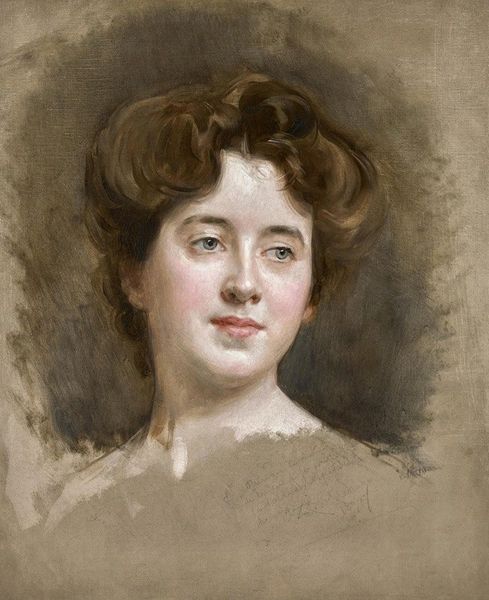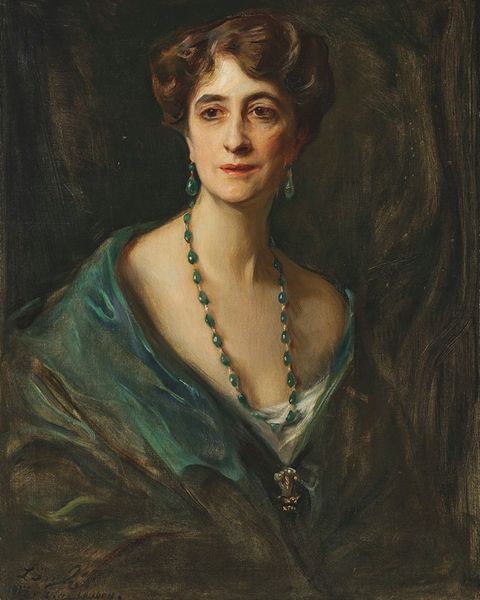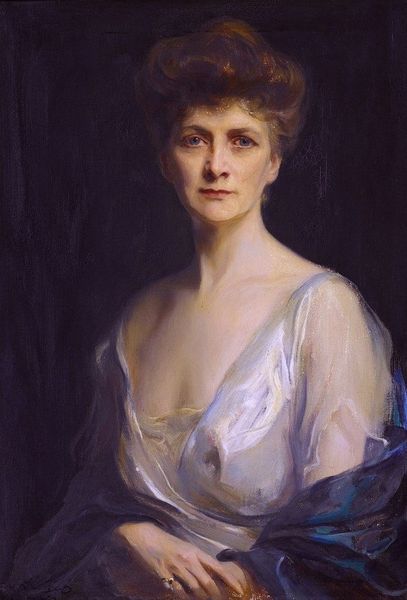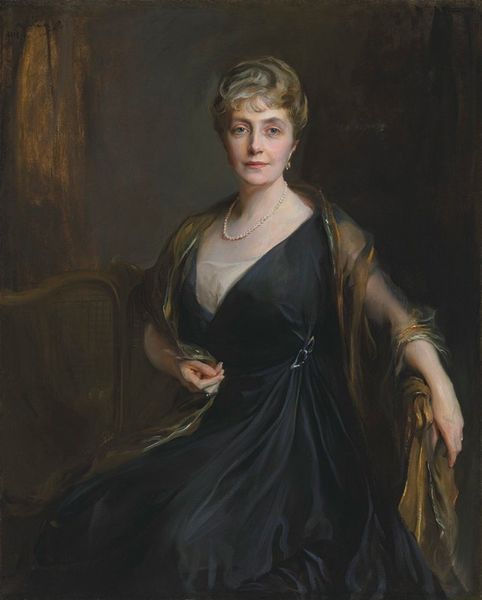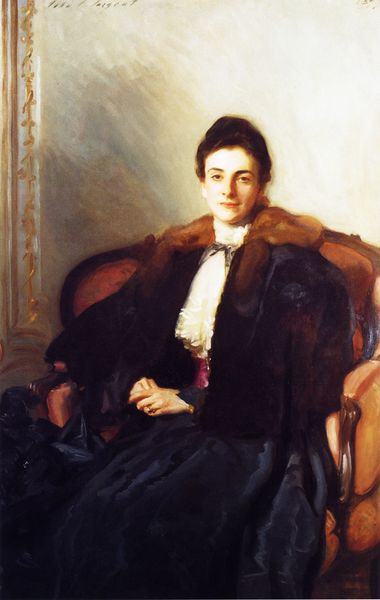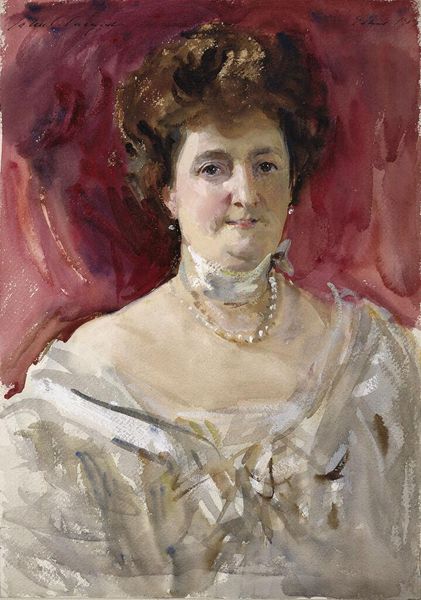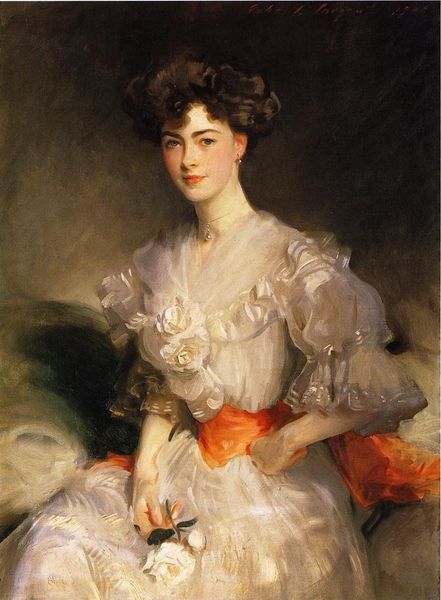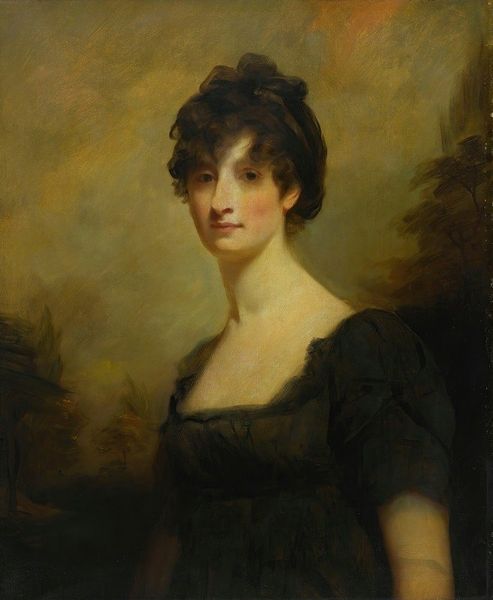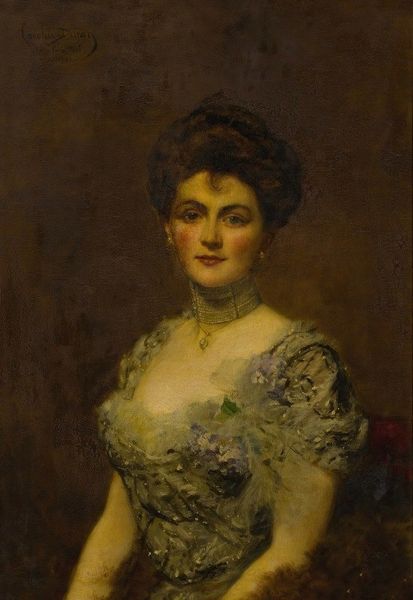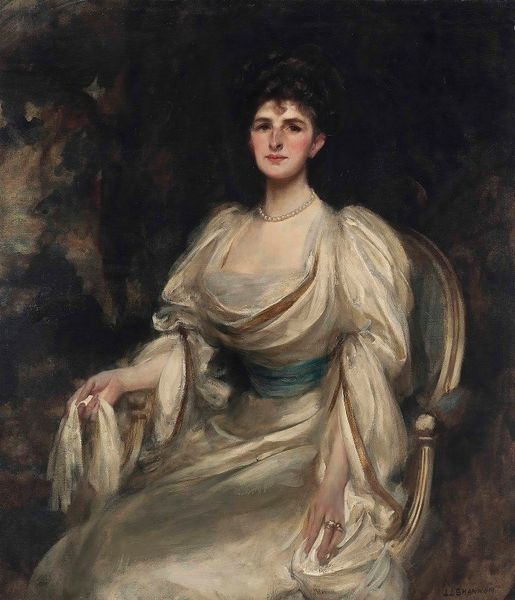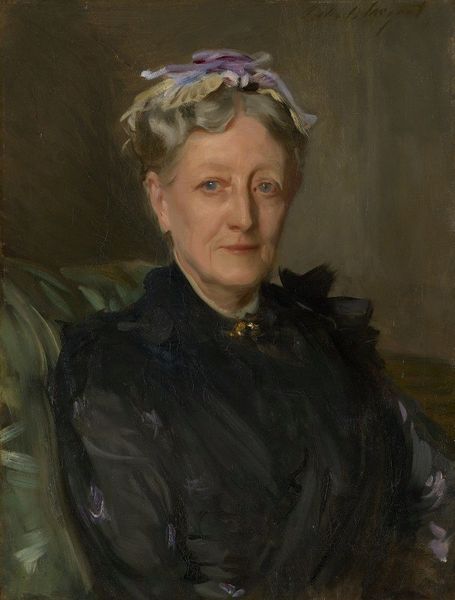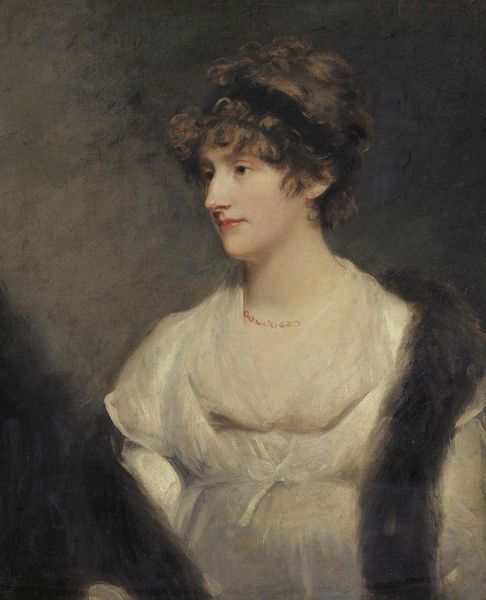
Copyright: Public Domain: Artvee
Curator: Before us is Philip Alexius de László's 1912 oil painting, "A portrait of Caroline Lambart, Countess of Cavan." Editor: There's an interesting intimacy here. The muted colors and soft focus lend her an ethereal quality, almost as if she's a memory fading into the canvas. Curator: Indeed, László was a master of capturing likeness while imbuing his sitters with a subtle sense of romanticism, wasn't he? Notice how the flowing fabric, in a very painterly fashion, drapes off of her shoulder—seemingly spontaneous in execution, it actually served to soften her silhouette and focus our attention on her face. Editor: The layering of brushstrokes gives a sense of the sheer physicality of the painting itself. Look at the construction of her dress and hair; he's really exploring the viscosity and reflective properties of the oil paint here, allowing those strokes to define form. The contrast is almost unsettling. It appears as though he constructed it in a matter of minutes. Curator: And that rapid execution makes sense, doesn't it, knowing the traditional codes of portraying nobility at this time? László worked fast because it was essential for high society patrons to project a sense of aristocratic effortlessness. There's that societal dance always present in the image. Her almost severe facial expression tells a hidden narrative, if you ask me. Editor: I wonder about László's choice to render her in this particular way, though. Was it about accessibility to the masses who commissioned or bought works during the inter-war years? What kind of labor went into it? How many portraits like this was he churning out at that stage of his career? All of these material conditions frame how we consume the image today. Curator: Excellent point. Her gaze holds a history we can only begin to reconstruct. The visual language points to both tradition and perhaps an emerging modernity struggling for self-expression. The dark background she emerges from might as well suggest something about what her social class and standing had been going through in recent years. Editor: Ultimately, it is not just a painting of a Countess; it is an object reflecting a certain kind of material consumption and aesthetic production of early 20th century European nobility, no? Fascinating indeed. Curator: Absolutely, a painting deeply embedded in a particular time and culture. Editor: I’ll certainly be seeing these society portraits in a new light from now on.
Comments
No comments
Be the first to comment and join the conversation on the ultimate creative platform.
